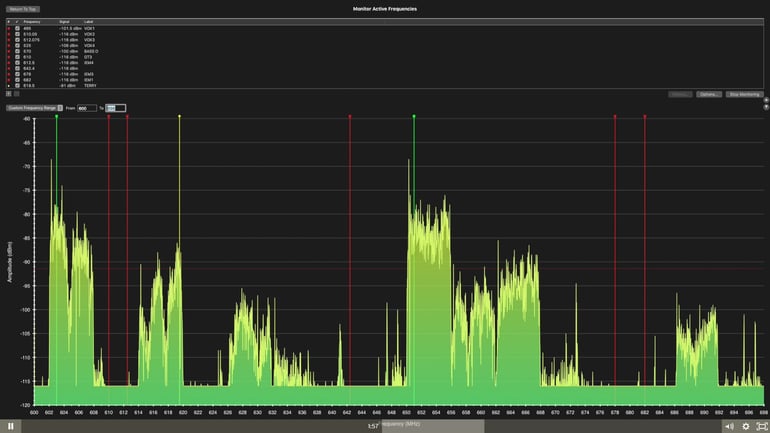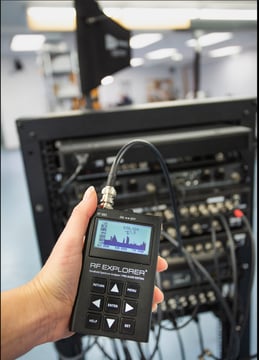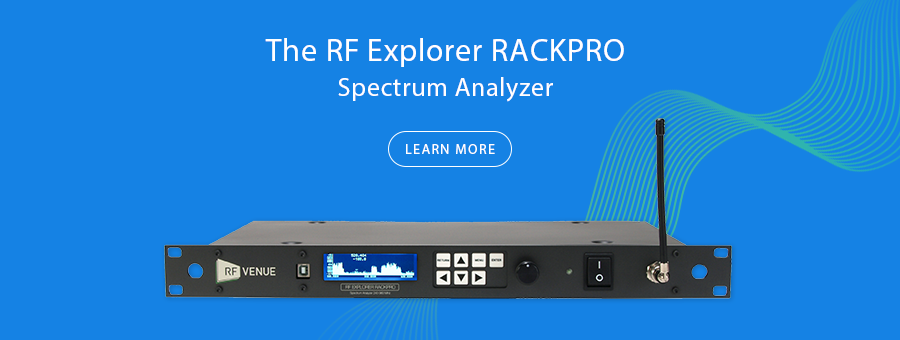
You’re a dedicated professional with a passion for great sound and expertly integrated audio systems. But you’re still a business that needs to pay rent, put gas in the truck, manage equipment budgets and pay your team.
Part of managing a wireless audio installation is making sure each job is profitable for your business. It’s not uncommon for simple wireless projects to go off the rails with overtime labor or unforeseen equipment expenses.
“A project isn’t static, it’s more of a shape shifter,” say project cost experts at Kildrummy. So while some cost adjustments are inevitable, you’ve got to control them if you want to make any money.
Understand the job and give an accurate quote
This is the single most important way to control your costs, so we’ve listed it first. You need an understanding of the scope of the work so you can give the customer an accurate quote.
Quoting properly starts with a clear grasp of the facility's operations area. Examine the space carefully and monitor the RF environment to establish a baseline RF scan. If you fail to visit the site before delivering a quote, the odds of incurring additional labor or equipment costs increase substantially.
More often then not, simple database searches such as wireless microphone manufacturers' zip code queries fail to reflect the reality of spectrum conditions on the ground. Equipment selection and design ought to reflect the specific spectrum conditions and existing equipment onsite. Showing up on install day with a wireless system whose function will be limited by third party interference sources will have a negative impact on your project cost. Here are four key elements to consider when quoting wireless microphone, IEM, or other production communication projects:
-
Number of wireless channels requested
-
Number of existing wireless channels to be coordinated into new system
-
Complexity of baseline scan from site survey
-
Complexity of operation area requirement
These elements contribute directly to how much time will be required to coordinate, walk test, and war-game your wireless system for best performance.
Read more: Evaluating the Site: Operation Area and RF Spectrum Analysis
Put the project scope and details in writing
The contract you sign with the venue owner or event planner should carefully lay out the scope of the wireless project. Be absolutely clear on this document to avoid scope creep. Make note of the customer’s goals, how you’ll address their problem, the type and price of equipment you’ll install, the training you’ll provide, the dates you’ll integrate the equipment, the project’s finish date, etc.
These details are important because they can greatly affect the scope of work. If you don’t define an operations area for example, the customer may demand that you make the wireless work in another part of their property after you’ve done the install. What starts out as a simple wireless mic project can turn into a multi-zone distributed antenna system stretching multiple spaces. Or if they're expecting detailed RF spectrum coordination or software training to use the system, your labor costs could balloon. And perhaps most importantly, if you don’t agree to a payment schedule in writing, your payment can be delayed.
Once the scope of the project has been established through a contract, resist any of the customer’s attempts to expand it. If the customer requests changes or additions that adjust the scope and/or cost, only agree if your schedule permits it and a change order is established and signed off. Train your team to abide by the project’s scope, as well.
Once you give the customer an estimate, that’s the number they’ll expect to pay. No matter how thoroughly you prepare them for fluctuations, customers are always disappointed when they have to pay more than the quote.
What happens if your costs expand? You have two options:
1. Ask the customer to pay more
No one likes paying more than they expect. A client might accept a small increase without complaint, but increases of 20% or more over the quote could make the customer balk. Avoid this scenario if you want the customer to send you more work in the future or if you depend on their referral for other projects.
2. Take the cost out of your end
If the customer complains about the final price, you could remove the difference from your profit. This can be a useful way to settle an angry client, but don’t forget that you’re a business too. You’re entitled to fair compensation. In many cases, your clients accept your quote because it fit within their budget. If the final invoice is greater than their budget, you may have no choice but to eat the cost yourself.
Naturally, unanticipated costs happen. Protect yourself by padding the quote by at least 10-15% to account for this. This can be both an art and a science that develops over years of successful integration work. If the installation goes smoothly without any hidden surprises, you could delight the customer by invoicing them for less than the quote.
Pre-program the system based on your RF spectrum analysis

Labor is the most expensive variable cost in a wireless project. Your time is valuable too (you have a business to grow, after all). It’s smart to limit your labor costs wherever possible.
Since every job site is different, you need a custom band plan for each installation that avoids frequency ranges where interference sources have been detected or where broadcast TV channels are located. During your site evaluation, you should have scanned the RF environment with a spectrum analyzer and a tool like Vantage to establish a baseline and identify sources of interference.
With this scan data, you can pre-program your wireless receivers and transmitters to the proper frequencies before you head to the job site. You can do this in your own workspace in advance when time allows, saving you time (and money) when onsite. On installation day, pre-programmed equipment only needs to be installed and tested.
Setup favorable payment terms with equipment vendors
Easier said than done of course, but working closely with equipment manufacturers and industry distributors can save you money and increase your cashflow by deferring project equipment charges until after the system has been installed and fully paid.
Shameless plug: By partnering with RF Venue, you get access to our wireless audio tools (patented remote antenna, RF distribution for both mics and IEMs, coaxial cables or RF over Fiber systems, and spectrum analysis tools for site surveys) at preferred pricing. You also receive our design expertise to support your projects from quote to system commissioning stage. Become a dealer here.
Follow up for service revenue and referrals
The wireless spectrum is dynamic and with the regulatory environment changing, smart integrators do routine follow up with customers on wireless system performance to see if additional service revenue opportunities or new projects become available. End users are adding wireless and expanding systems all the time, so before closing out your project make sure to communicate that you'll be following up to make sure the system is performing well and that you can advise them on any future projects or expansion plans.
More from the blog

Managing a Wireless Audio Installation Project

Evaluating the Site: Operation Area and RF Spectrum Analysis

Spectrum Analysis for Wireless Mics and IEMs: Part 1
Subscribe to email updates
Stay up-to-date on what's happening at this blog and get additional content about the benefits of subscribing.

